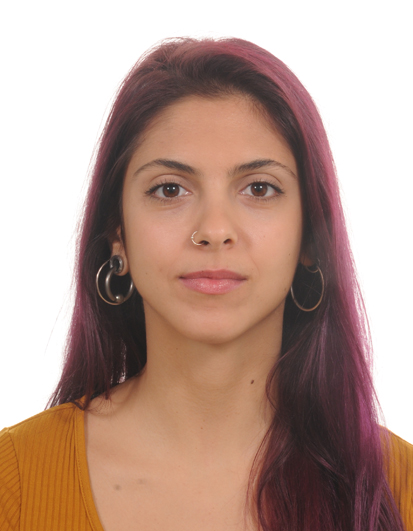Erasmus+ Internship at Centre for Urban Network Evolutions
Summary of Erasmus+ internship at UrbNet from 5 April to 30 June 2021 by Eirini Kapogianni.

My name is Eirini Kapogianni and I am a graduate archaeologist of the University of Ioannina, Greece. Recently, I completed a 3-month Erasmus+ Internship at Centre for Urban Network Evolutions (UrbNet) at Aarhus University, Denmark. Albeit in the midst of the pandemic, I was lucky enough to get involved with various tasks.
Due to the travel restrictions, the first month was fulfilled virtually, with my participation in lectures, seminars and staff meetings at the centre. I had the opportunity to meet, although not physically, a lot of nice people and get introduced to new topics and perspectives within the research currently conducted at UrbNet.
Later on, I was able to travel to Denmark and begin my in-person internship. In the beginning, I was based at the Conservation and Natural Sciences Department of Moesgaard Museum, where I took up my first archaeobotanical project. With the careful guidance, assistance, and supervision of the archaeobotanist Peter Mose, I went through the wet samples of the Posthustorvet excavation of Ribe under the microscope, with a focus on the botanic remains. Afterwards, in consultation with my internship supervisor Professor Søren M. Sindbæk, I prepared a report that presented the results of the sample examination. This was a magnificent experience of how science and multi-disciplinarity is being performed in archaeology.
Furthermore, I participated in two miscellaneous excavations. The first one was a research and training excavation at Ginnerup, focusing on the prehistoric Mesolithic period, and the second one was a rescue and training excavation at Erritsø, with a focus on the Viking-age period. During these, I received training in the several different aspects of archaeological fieldwork: stratigraphy drawing and photographic depiction, keeping archaeological diary, GIS recording, as well as water-sieving and sorting of the soil samples and the micro-findings. Moreover, I was given the chance to understand both theoretical and practical aspects of how archaeology in Denmark works, and how to adapt to the diverse requirements of different sites.
At the very end of my internship, I contributed to a geophysical survey at Aarhus harbour with the marine archaeologist Peter Astrup. This was a totally new experience that familiarized me with marine duties.
All in all, apart from the priceless scientific knowledge and experience I gained, I was fortunate to meet amazing people, and enjoy different aspects not only of archaeology but also beyond that. It has been a life-changing experience, which I will carry with me and hopefully put into use in my future career. I am grateful to have fulfilled such an inclusive internship thanks to my supervisor Søren M. Sindbæk and all the lovely people I collaborated with. Not only did they share their valuable expertise with me, but they also made me feel at home.
